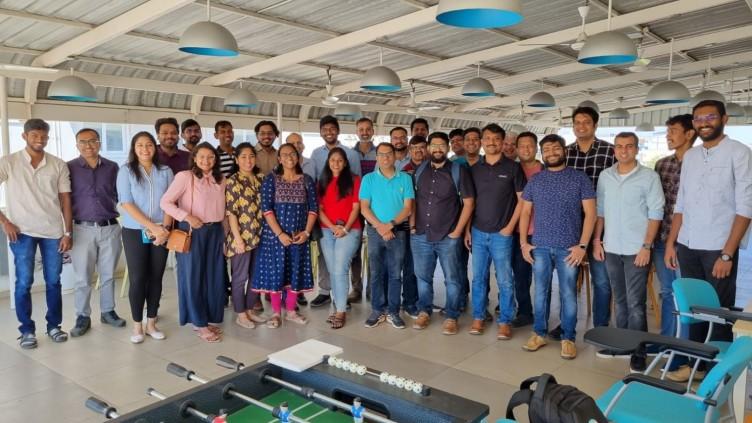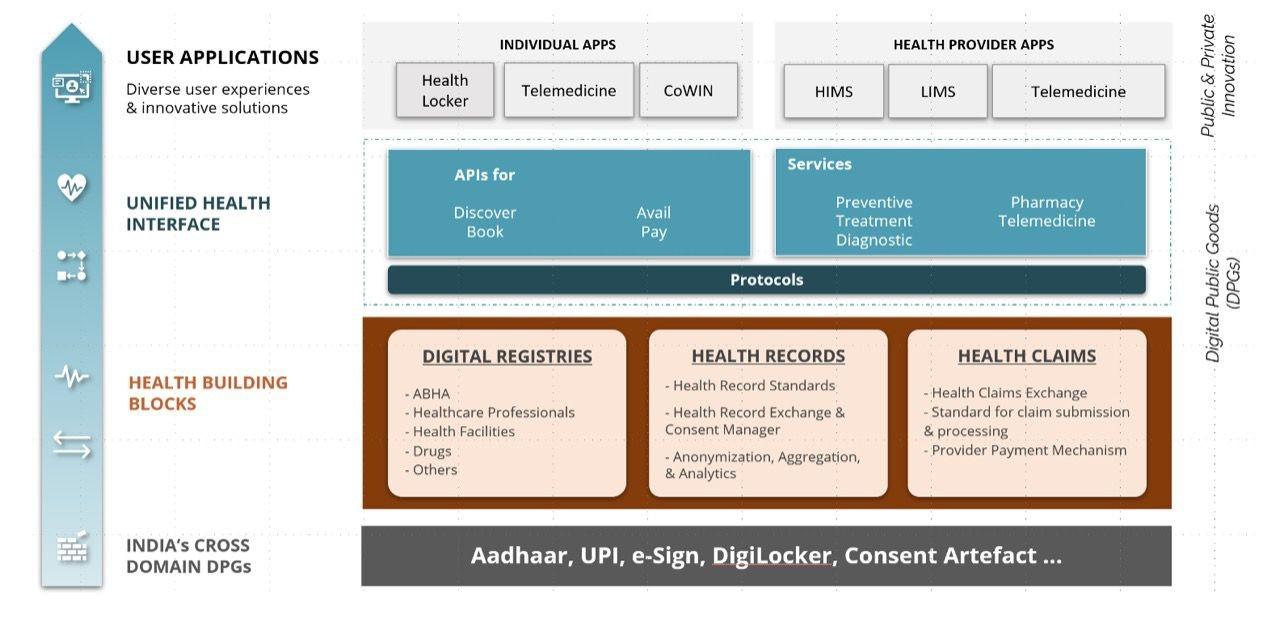Key takeaways from my first #FHIR Community physical Meetup.
India setting the precedent for the rest of the world when it comes to #digitalhealth - through the #ABDM mission.

Firstly thanks to Kumar Satyam and the team at Narayana Health Athma for facilitating such an engaging and learning meetup - Liked the way Kumar puts it about the meetup "Overall a light environment for serious stuff"
Sharing some learning that stuck with me:
India poised to set the precedent for the rest of the world when it comes to #DigitalHealth - through the #ABDM mission.
The main objective is to build the digital health infra backbone (based on open standards and protocols) that can be the foundational building blocks on which economies of scale like ours (the most populous country in the world as of now) can manage her affairs better and can bring about economic growth and a level playing field for all players in the ecosystem
The success of UPI (India’s Unified Payment Interface) - which has seen rapid adoption and growth at all levels, and has recently crossed beyond our borders to other countries as well - is a sure forerunner to what #ABDM components are poised to achieve (mainly Health Registry, Health Records, and HCX). However, healthcare is tricky and the challenges are of a different order of magnitude when compared with the financial domain where UPI has been rolled out.
Some of the on-the-ground challenges and hurdles faced when it comes to implementation - as of where ABDM is right now

Health Registries: PMJAY enrollment and #cowin registration are the largest drivers to the number of #ABHA registrations (aka the citizen Patient ID) achieved so far. QR code-based patient registrations has see an uptick in patient registration counts of late - but it is still a challenge to cover the whole population of India. Apart from Patient registry, Facility and Healthcare professional registration is yet to catch-up a lot and a big challenging problem that is still under debate around the consent mechanisms, and other incentivized means to reach the goal of creating this huge registry. Some live stats can be seen here Health Record Linking: The ABDM implementation of linking health records and actual sharing of health records between providers or PHR apps is still a bottleneck for implementers - due to the fact that health data is not always structured, but is often in large file sizes (PDFs, DICOM images, and PACS data). Achieving such infrastructure for every provider to be truly interoperable as to their data stores of health records is going to be a very costly affair - both in terms of technical feasibility (based on the current specifications of ABDM M4) and in terms of the cost of IT infrastructure to support the use cases. There is sure potential for SaaS HIMS/EHR providers and dedicated inter-op service providers (who can lift legacy systems) to plug the gap.
HCX: HCX is a very important piece in the mix that sort of completes the loop in the whole ABMD parlance - being able to democratize health insurance across the board is the big hairy goal for a country of our scale. The goal is to enable Providers, Payors, and Policymakers to seamlessly work towards reducing the barrier to provide care at all tiers of the healthcare provider ecosystem. Taking the possibility of health claims even to the tier 1 and 2 facilities and not just confined to the TPA-supported network hospitals. The PMJAY scheme will be a huge beneficiary to what HCX can achieve - but HCX is still in its formative stages - but before it can see the light of day, its predecessors have to catch up to full throttle.
How the #FHIR community and different players in the ecosystem can participate in order to make India’s ABDM dream a reality:
Volunteering opportunities: Get in touch with organizations heading these initiatives - they need your support on various fronts - documentation, shaping the specifications, validating, development, and much more.
#FHIR being the healthcare resource definition reference standard - we need more FHIR-certified developers and software companies who have expertise in digital health and working with FHIR - to contribute at various layers of the ABDM stack.
We need a bottoms-up outlook when it comes to conceiving our Healthcare IT infrastructure and landscape to shape to support the ABDM fully. EHR and HIS players have a crucial role to play in adopting their system or building new ones that support medical codes, terminologies, and data models based on FHIR. The current state of affairs of healthcare IT is mainly focused on billing, financial, and accounting coverage - but very little to none when it comes to standards and clinical data capture. Barring a few HIS that are leading the way - Athma by NH, Medblocks Ignite EHR, to name a few.
Incentive Programs are encouraging:
Integrator or Bridger License for #healthtech companies.
Overall a lite environment for learning serious stuff
Some useful links shared -
LinkedIn Groups
Atul-Kuruvilla
Github: pythonpen
No comments yet. Login to start a new discussion Start a new discussion